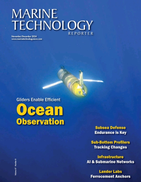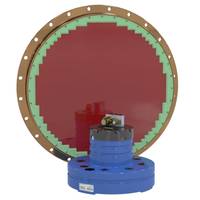
Teledyne ADCP Selected for 63-ft. Hybrid Ocean Monitoring Vessel
of the ocean currents from near surface to near bottom, is the perfect tool we needed to optimize the utility of the vessel we’re building”.The vessel built by AAM will enable OC San to carry out environmental monitoring, marine research, and ocean sampling efficiently in the Southern California Coast. The ADCP will help inform OC San’s Ocean Monitoring team on current movements during complex oceanographic research and sample collections. The ADCP data will be used to augment OC San’s water quality program and support the National Pollutant Discharge Elimination System (NPDES)
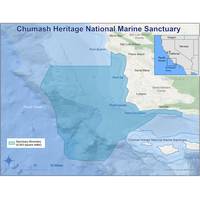
US Creates New Marine Sanctuary Along California Coast
The Biden administration on Friday announced the creation of the Chumash Heritage National Marine Sanctuary along California's central coast, a victory for the Chumash tribe that pursued the designation for a decade.The newly formed sanctuary is part of U.S. President Joe Biden's goal to protect 30% of U.S. lands and waters by 2030.The sanctuary excludes areas where transmission cables and other infrastructure to support planned offshore wind facilities could be installed, the National Oceanic and Atmospheric Administration (NOAA) said in a statement. The agency, a division of the Department
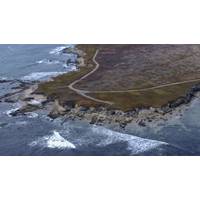
New Sanctuary Designated Along California Coast
The Biden administration on Friday announced the creation of the Chumash Heritage National Marine Sanctuary along California's central coast, a victory for the Chumash tribe that pursued the designation for a decade.The newly formed sanctuary is part of U.S. President Joe Biden's goal to protect 30% of U.S. lands and waters by 2030.Stretching from just south of Diablo Canyon Power Plant in San Luis Obispo County to the Gaviota Coast in Santa Barbara County, the sanctuary will bring community- and ecosystem-based management to nationally significant natural, historical, archeological and
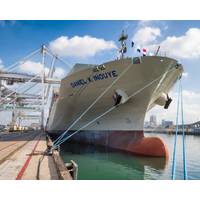
Matson Helping to Develop Whale Detection Technology for Ships
cutting-edge technology that detects whales and alerts crew members of their presence.In August of last year, Matson made route adjustments to its weekly triangulating Oakland-Long Beach-Honolulu voyage to minimize the time our vessels spend inside whale protection zones of the northern and southern California coasts. Fleet Operations led the development process for creating these new routes with the goal of reducing the risk of whale collisions in areas that are known whale migration routes, feeding grounds, and breeding areas. Since the new routes were implemented, Matson’s compliance with voluntary
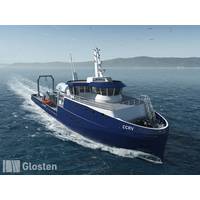
Hydrogen-Hybrid Research Vessel Earns AIP
Chart Industries.AIP shows that the CCRV design meets the technical requirements and safety standards of ABS, but more broadly, it validates the use of hydrogen-fuel-cell propulsion for medium-sized coastal vessels. The CCRV will help Scripps and its researchers study the marine ecosystemalong the California coast, running entirely on emissions-free hydrogen fuel cells for 75 percent of its missions.“Our goal is to produce a fully capable ocean-going research vessel that meets the needs of our scientists and students, and demonstrate that this can be done in a way that absolutely minimizes its impact
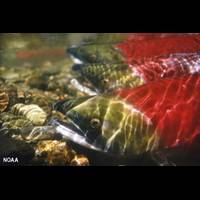
US Announces $27 Million for Pacific Salmon Research
here in Washington,” said Washington Senator Maria Cantwell. “Salmon are central to the culture, economy and marine ecosystems of the Pacific Northwest, and this investment in science will help us make the right choices and help protect salmon for years to come.""From the California Coast through upstream rivers, Chinook and coho salmon populations have plummeted, leading to catastrophic consequences for the environment and for fishers, tribes, businesses and families who depend on healthy salmon fisheries,” said California Senator Alex Padilla. “As climate change
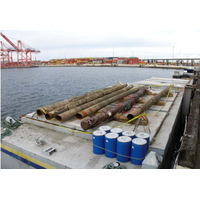
NTSB Recommends Pipeline Operators Implement Safety Management Systems
The U.S. National Transportation Safety Board (NTSB) is recommending new notification alarms and procedures for potential incursions on pipelines and a change to an anchorage off the California coast following a crude oil release in 2021 caused by ship anchors damaging an underwater pipeline.NTSB investigators determined that the oil leak, which began on October 1, 2021, in San Pedro Bay, resulted from an anchor strike on the pipeline that occurred eight months earlier, when anchors from the containerships Beijing and MSC Danit dragged and contacted the pipeline during high winds and seas caused by a
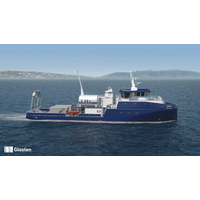
Glosten, Siemens Energy Select Key Equipment Vendors for World's First Hydrogen-hybrid Research Vessel
for the fuel cells—both essential components of a hydrogen-fuel-cell propulsion system. The equipment from these vendors will allow extended zero-emissions operation of the Scripps’ CCRV to help the university to meet its goals for clean operations during science missions along the California coast.“Ballard Power Systems and Chart Industries are known for their expertise in hydrogen technologies, so we felt like they were a natural choice for a hydrogen propulsion system this unique,” said Tim Leach, the principal naval architect at Glosten leading the CCRV design effort.
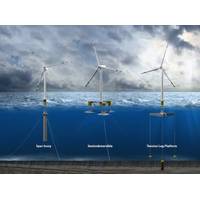
How Do Floating Wind Turbines Work?
wind turbines that float.In California, where drought has put pressure on the hydropower supply, the state is moving forward on a plan to develop the nation’s first floating offshore wind farms. On Dec. 7, 2022, the federal government auctioned off five lease areas about 20 miles off the California coast to companies with plans to develop floating wind farms. The bids were lower than recent leases off the Atlantic coast, where wind farms can be anchored to the seafloor, but still significant, together exceeding US$757 million.So, how do floating wind farms work?Three main ways to float a turbineA
 December 2024
December 2024


